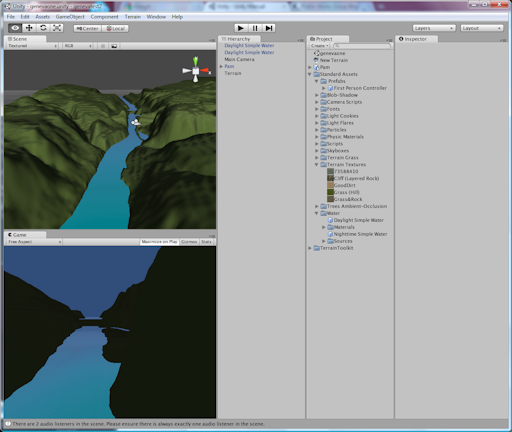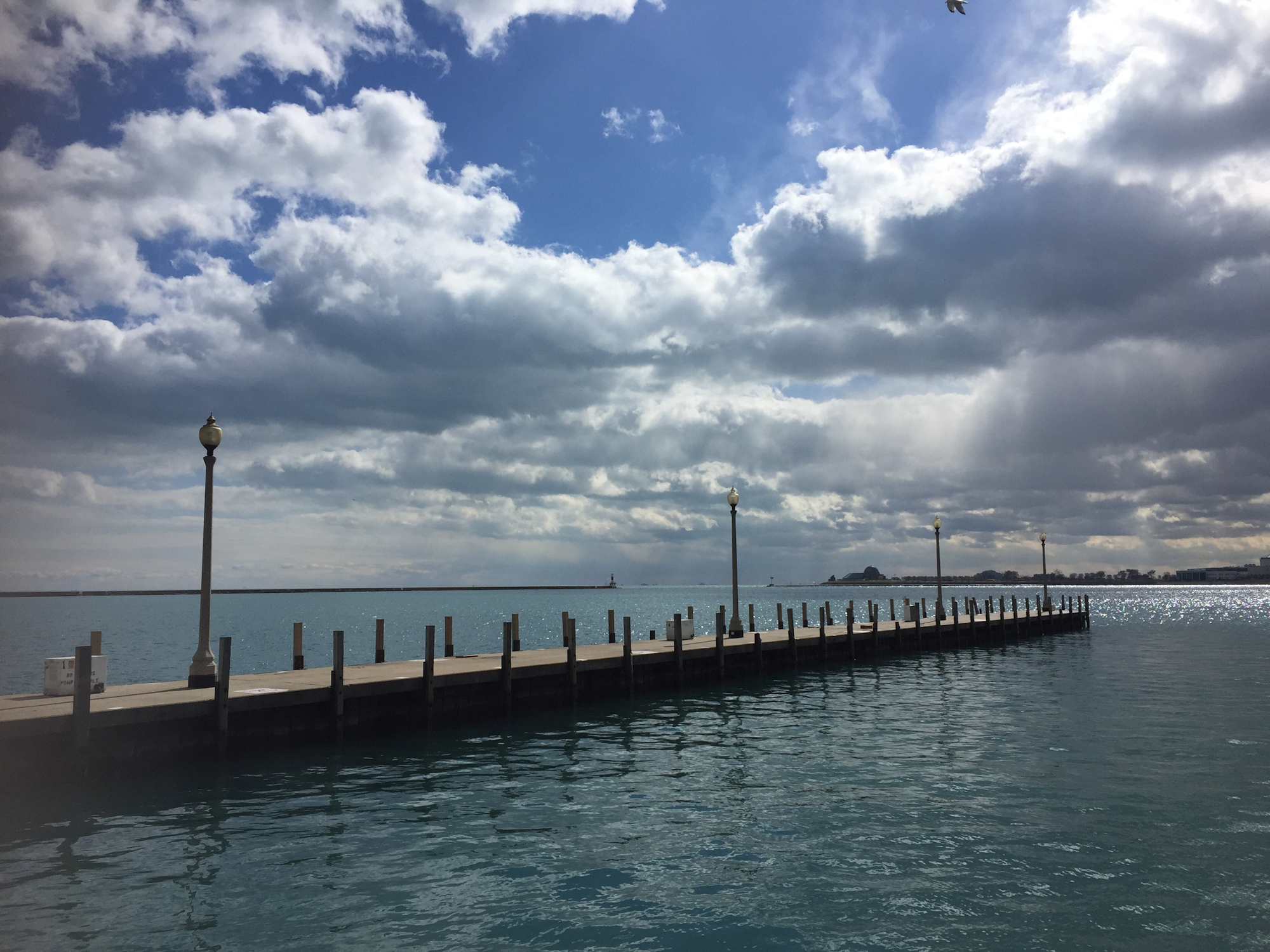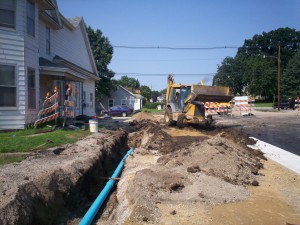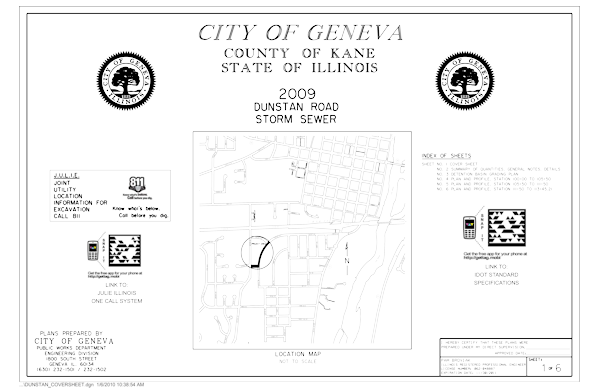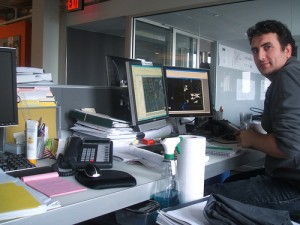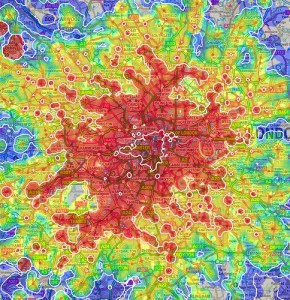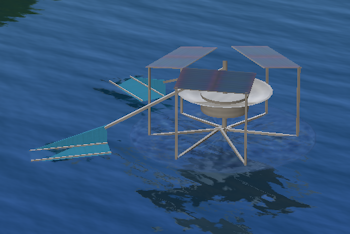 Back in 2006, I decided to join and explore the Second Life community in order to find out how it could help me as an engineer. I was also interested in finding out how it could help promote our community. As I became more involved, I realized there was even more potential to virtual worlds than I had imagined. Over the years, I eventually saw more ideas and uses emerge.
Back in 2006, I decided to join and explore the Second Life community in order to find out how it could help me as an engineer. I was also interested in finding out how it could help promote our community. As I became more involved, I realized there was even more potential to virtual worlds than I had imagined. Over the years, I eventually saw more ideas and uses emerge.
However, the main community of Second Life is not there in order to develop engineering uses for this technology. And while there are some isolated examples of people using Second Life for serious business and there are many education-based communities, there still is not a large, organized community for developing engineering-related tools in-world.
Another challenge for me has been that Linden Lab, the company behind Second Life, does not appear to be focused on the use of their technology for engineering-related work. Many have asked for the capability to import/export CAD drawings and have received little to no support. Linden Lab also seems to waver and change their terms of service a lot making it difficult for people to make commitments for its use as a design or operating platform.
I had hoped that all of this would eventually develop, but instead what seems to have happened is that a group has migrated from Second Life 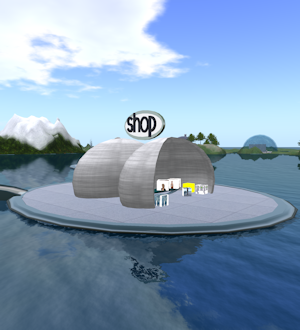 over to another “grid” or virtual world called Reaction Grid. I knew the members of this group were more focused on the use of virtual worlds for business and engineering so I visited. Now I am hopeful that I have finally found the grid I had been searching for to help me focus on the engineering and business aspects of virtual worlds.
over to another “grid” or virtual world called Reaction Grid. I knew the members of this group were more focused on the use of virtual worlds for business and engineering so I visited. Now I am hopeful that I have finally found the grid I had been searching for to help me focus on the engineering and business aspects of virtual worlds.
Not only are most of the residents of this grid very intent on using virtual worlds to enhance business, but the people running the grid are interested and involved in the projects that their residents are developing and working on. They are also involved in helping all of us better understand the technology behind virtual worlds.
I think this involvement in community, which is somewhat opposite of the hands-off approach of the Second Life grid, is important for several reasons. First, if we are to leverage this technology for our work, we need to have a good understanding of how it works and its capabilities. I like that the people running the grid have invested in hosting events and classes to help us in this endeavor because I think the faster everyone learns the technology, the faster the grid will develop.
Second, what this does is encourage more residents to also get involved in helping to move development forward, not only with their own projects, but with the grid as a whole. I think the ThinkBalm Innovation Community site 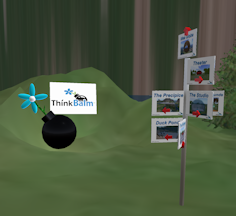 on Reaction Grid is indicative of this commitment to community. This group, which is dedicated to advancement of the Immersive Internet, is based on the collaboration and sharing of ideas.
on Reaction Grid is indicative of this commitment to community. This group, which is dedicated to advancement of the Immersive Internet, is based on the collaboration and sharing of ideas.
Next, some of us who are interested in using virtual worlds do not have all the skills necessary to completely develop our own projects. Working within a grid that promotes involvement makes it much easier to find others who might be willing to help.
I recently had an experience that illustrates this: In an effort to show others in my field the benefits of virtual worlds, I have been trying to set up a simple 3-D SCADA. I know it can be done, I am convinced that this is where our operating technology will soon be for our water and wastewater plants, and I know it is something to which everyone in my field could immediately relate. But trying to find a programmer in Second Life who understood what I was talking about and who was willing to do this was impossible.
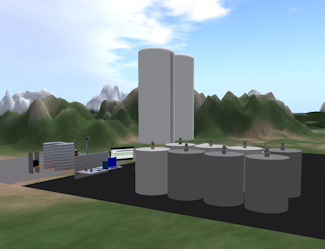 However, over on Reaction Grid, there were several who immediately knew what I was trying to accomplish. The owner even built a demonstration project on the grid showing how a fuel facility could monitor fuel levels and then notify operations when the tanks needed to be refilled. Now I finally feel there might be a chance I will one day help introduce virtual worlds to engineers and operators using a 3-D SCADA demonstration.
However, over on Reaction Grid, there were several who immediately knew what I was trying to accomplish. The owner even built a demonstration project on the grid showing how a fuel facility could monitor fuel levels and then notify operations when the tanks needed to be refilled. Now I finally feel there might be a chance I will one day help introduce virtual worlds to engineers and operators using a 3-D SCADA demonstration.
One other attraction for me has been the approach that Reaction Grid has taken to building a grid. Instead of buying land and paying tier (tax) as we do in Second Life, on Reaction Grid, you can pay to host a sim which reminds me much more of how Websites are hosted and set up. That seems like a much more viable and long-term business solution for the creation and hosting of virtual worlds. Particularly now that the hypergrid technology has been implemented. Second Life is now a walled garden that you cannot leave while these other grids allow you to move from grid to grid just like we do between Websites.
Aside from all this business, I do have to admit, there is also an element of fun to virtual worlds that increases their appeal. And attending interesting virtual events does help to further connections and community. I think Second Life has a lot to offer along these lines, and even though Reaction Grid is more focused on business, they also incorporate 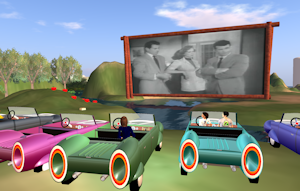 interesting builds and fun events. One of the most entertaining events on the grid has been Fright Night – an event that is set up like a drive-in movie theater where we watch great, old, creepy shows and throw tomatoes at the screen. I know that is where I will try to be every Saturday night. And whether you are interested in developing an engineering project or throwing tomatoes at a movie screen, Reaction Grid seems to be the place to be.
interesting builds and fun events. One of the most entertaining events on the grid has been Fright Night – an event that is set up like a drive-in movie theater where we watch great, old, creepy shows and throw tomatoes at the screen. I know that is where I will try to be every Saturday night. And whether you are interested in developing an engineering project or throwing tomatoes at a movie screen, Reaction Grid seems to be the place to be.
